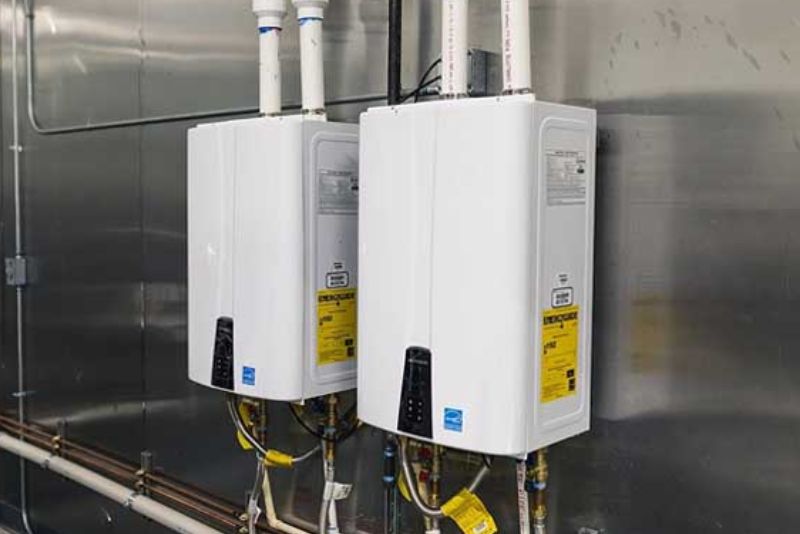The main reasons behind Navien tankless water heater temperature swings are flow rate issues, cold water sandwiches, and using multiple faucets at once.
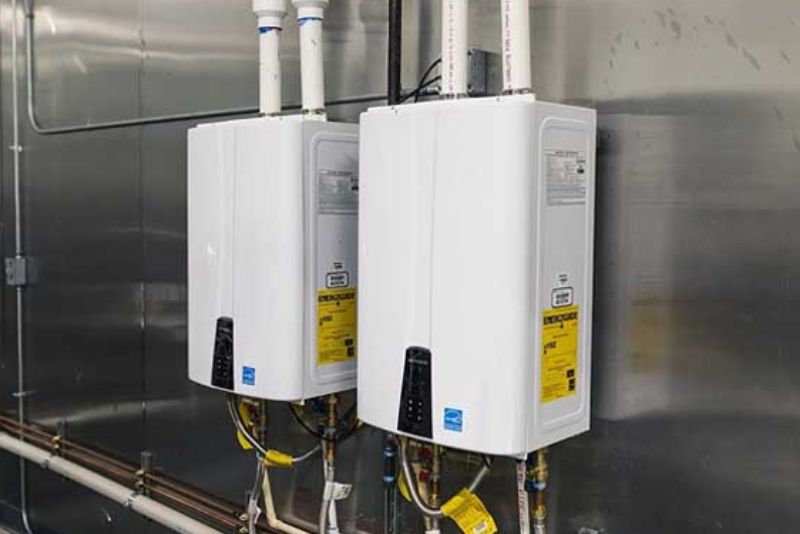
There are also other issues like inaccurate gas line size, crossover in plumbing, low water pressure, sediment build-up, clogged water filter, and corroded lines.
You can solve this problem by replacing the check valve, and flow sensor, or adding a small tank in most cases.
However, it doesn’t mean that you should ignore the other issues as they’re pretty common as well.
Keep reading this guide to know all about these problems in detail and learn how you can fix them. Without further ado, let’s dive in!
Table of Contents
- How Does A Tankless Heater Work
- Navien Tankless Water Heater Temperature Swings [Reasons + Solutions]
- 1. Flow Rate Issues
- 2. Cold Water Sandwich
- 3. Using Multiple Faucets At Once
- 4. Inaccurate Gas Line Size
- 5. Crossover In Plumbing
- 6. Low Water Pressure
- 7. Sediment Build Up
- 8. Clogged Water Filter
- 9. Corroded Lines
- FAQs:
- What temperature should a Navien tankless water heater be set at?
- How to set the temperature on Navien tankless water heater?
- Why do I get cold water in the morning?
- How long do Navien tankless water heaters last?
- Conclusion
How Does A Tankless Heater Work
Before delving deep into the issues that tankless water heater temperature fluctuations, let’s look at how it works in the first place. Understanding it will give you a better grasp of the problems that cause it.

There are many common appeals of a tankless heater that make people put one in their homes compared to a traditional water heater.
Tankless heaters are said to be more efficient than tank-style heaters, with less loss of energy, not running out of warm water, and saving on energy bills.
All these factors may have persuaded you to get one. So, how does it work differently than the tank heaters?
Traditional water heaters need to store water in a tank and that’s why they’re usually so big in size. They heat the water and store it for use later. An average tank heater stores 30 to 50 gallons every day.

The main issue with them is they waste a lot of energy by heating the water unnecessarily long before it’s meant to be used.
Keeping warm water on standby drives up the energy bills. So, tankless water heaters were introduced as a solution to this problem.
They are much smaller than tank-style heaters as they don’t have any storage tanks. They give you warm water when you turn on the faucet.
It works by igniting the heat exchanger, the water goes through it, and becomes heated.
Navien Tankless Water Heater Temperature Swings [Reasons + Solutions]
We’ll discuss the most common reasons behind the temperature fluctuations of the water coming out of your heater in this Navien water heater troubleshooting guide.
Note: You can also read our guide on how to fix Rheem tankless water heater code 11.
1. Flow Rate Issues
It’s a little more challenging for tankless water heaters to give warm water as it has a very short window to do so.
And if there’s a bad flow rate, less water will go through the heater. That’s why you may get water that’s both hot and cold temperatures in this situation.
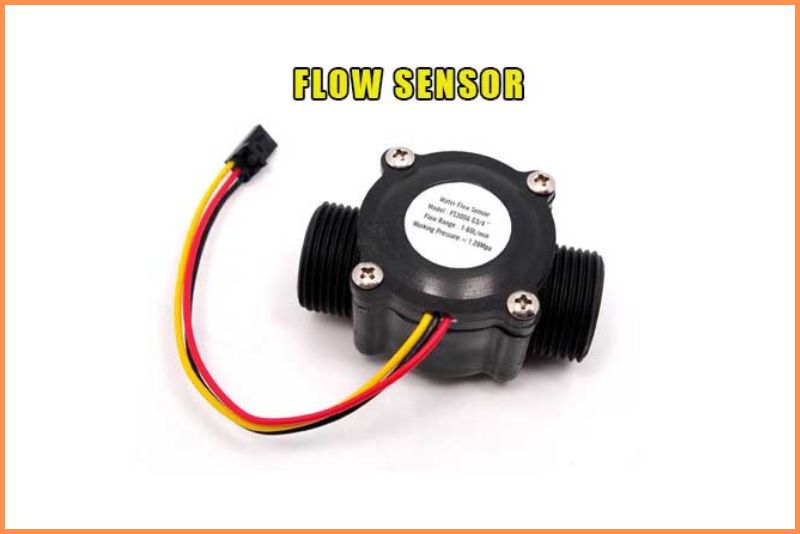
There’s a device in a tankless water heater called the flow sensor. It measures the amount of cold water entering the system and sends that information to the control board.
In response, it activates the heat exchanger or adjusts the heat depending on the water that’s coming in.
If this sensor goes bad and gives the wrong reading, the water going through the system won’t be heated properly. The end result will be temperature fluctuations.
The check valve not closing completely can also lead to flow-related issues. Cold water coming in can flow backward if it remains partially open.
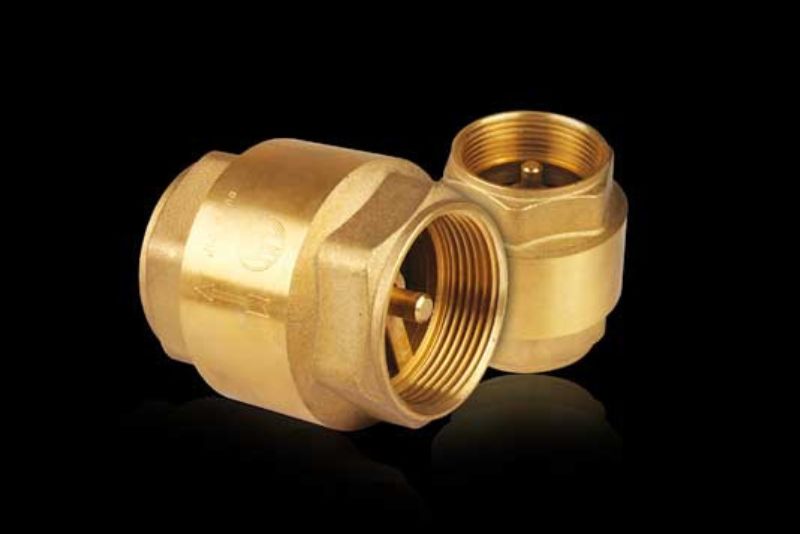
That allows the heated water to mix with cold water and causes changes in the temperatures.
The water flowing in reverse will also bypass the flow sensor and cause an insufficient flow rate when exiting.
The flow sensor could signal the control board to shut off the burner and cause even more problems.
How To Fix:
The main challenge here is to identify what’s causing the flow rate issues. The easiest possible fix to this problem is to make sure your check valve is closed all the way. If the check valve you’re using is stuck, you can replace it.
It’s a low-cost component available in hardware stores that even a beginner can replace on his own.
If that doesn’t work, consider changing the showerhead. A normal showerhead uses 2.5 gallons of water per minute.
The reason that you’re having a low flow rate could be due to a showerhead that uses too much water.
So, look for a showerhead with more volume so that there’s more water pressure and it can compensate for pressure drops.
If the flow rate sensor is damaged, you’ll have to get it replaced. Issues with the thermostat or gas lines can also mess up the readings on your flow sensor. So, make sure that they’re okay before you replace them.
2. Cold Water Sandwich
A common reason behind an electric tankless water heater temperature fluctuations is a cold water sandwich.
It usually means that the heater will give hot water for a few seconds, followed by cold water, and then warm water.
It mostly happens when one faucet is turned on after another has been turned off. The hot water you get first was stored in the faucet and the cold water comes from the tankless heater before it can activate the heat exchanger.
How To Fix:
You can just ignore it if it doesn’t seem like a big issue to you. Waiting for a few seconds before using the water is enough to work around this issue.
It may not matter much when you’re washing your hands but it can be extremely annoying when you take a shower.
But if you want to solve this problem for good, there are two options. You can either install a recirculating system or add a small tank heater.
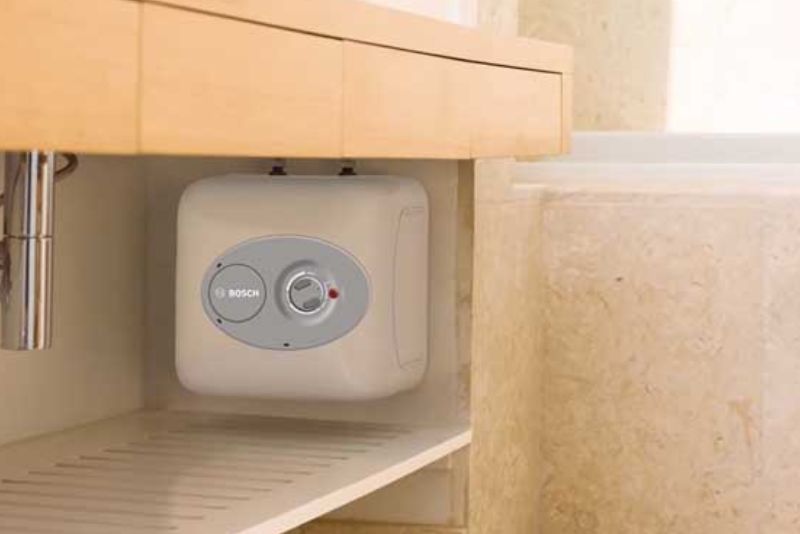
Adding a recirculating system will be enough if you don’t have the need of using a lot of hot water at once. Your energy bills will increase if you go this route.
However, if you need more water at a time, you can install a small tank water heater to improve the capacity of your tankless water heater. Doing so will make sure that you completely get rid of the cold sandwich issue.
3. Using Multiple Faucets At Once
If there is more than one faucet in your house being operated at the same time, it can cause a fluctuation in the temperature.
You could have been enjoying the nice hot water and as soon as someone on the other end of your house uses another faucet, you’ll get cold water.

The main reason behind this issue is that the water heater you have is not powerful enough. It lacks the capacity and efficiency to heat enough water so that multiple faucets in your house can get hot water simultaneously.
How To Fix:
Once again, it won’t require a drastic step to solve this Navien tankless water heater not staying hot problem if it only happens once or twice.
You can simply limit the use of simultaneous taps in your house by having a discussion with your family.
Make a schedule so that everyone knows what to expect. Of course, you won’t be able to always stick to the plan but it’s a good starting point.
If that doesn’t feel like the right solution for you, add a recirculating system or add a small tank heater just like you did in the case of a cold water sandwich.
Adding another extra component will increase the capacity of your heater. You should have nice hot water running through your faucets if you do it.
4. Inaccurate Gas Line Size
The gas line needs to be extended when you plan to use a tankless water heater. The correct gas line size for a Navien tankless heater can be anywhere from 1/2″ to 1″ in diameter.

If you get hot and cold water from your unit, then you have not changed the gas line or changed it to the wrong size. As enough gas can’t get to the heater, it can’t do its job properly and gives cold water.
How To Fix:
Refer to your owner’s manual and find out the correct gas line size for your model. If the gas line size is wrong, call in an expert to change the gas lines to the right size. Don’t do this job yourself as making any mistake here can lead to a fire hazard.
5. Crossover In Plumbing
Doing the installation of the tankless water heater correctly is important as there’s a direct connection between the supply and return lines.
If you did the installation yourself instead of hiring an expert as you should have, it may have created this problem.
Cold water will get into the hot water line and cause the Navien tankless temperature fluctuation issue.
You can do a quick test to find out if there’s a plumbing crossover. Turn off the cold water supply to your heater and turn on all the water faucets in your house.
If you see water flowing out of the faucets even after a few minutes have passed, you have a crossover in plumbing.
Finding out the root cause behind this issue can be difficult on your own. It can be caused by a damaged pressure balancing valve, faulty mixing valve, or bad cartridge as well.
How To Fix:
The first thing you can try without doing anything drastic is to turn up the temperature on the thermostat. This should raise the water temperature slightly and give you warmer water than you were getting before.

Make sure you don’t set it too high so that you can be scalded. If you’ve already set it to a high temperature, then ignore this solution.
The next thing we’d recommend is installing a pressure-balancing valve. Its job is to balance the extra pressure when cold water gets into the system so that you won’t have bursts of cold and hot water.
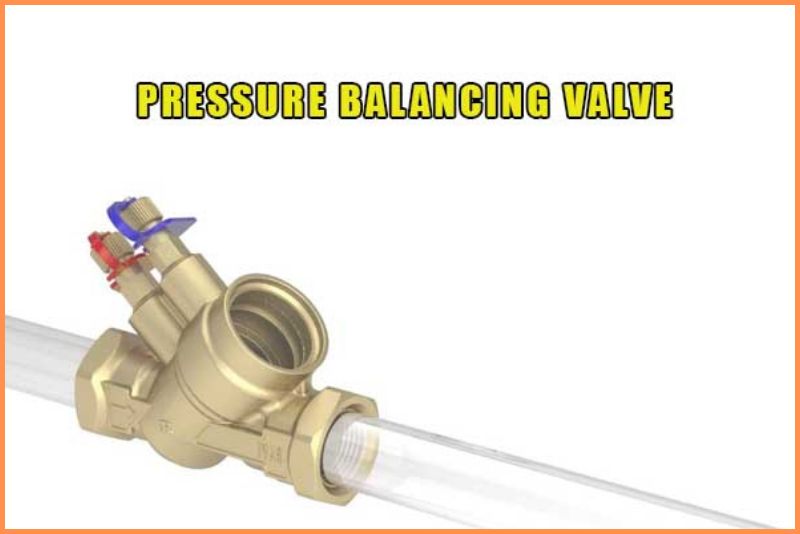
Finally, replace the shower mixing valve if the two fixes mentioned above don’t work for you. If the problem still persists, you’ll have to call in a plumber to check it out and fix it for you.
6. Low Water Pressure
One of the potential reasons behind getting Navien intermittent hot water is low water pressure.
If the flow within the tankless water heater is lower than the rate that’s required to activate the heat exchanger, the burner may get closed off at times.
And when that happens, you get cold water in between getting hot water. It’s easy to test if the water pressure in your house is lower than required.
First, go through your owner’s manual to know the water pressure required by the Navien water heater.
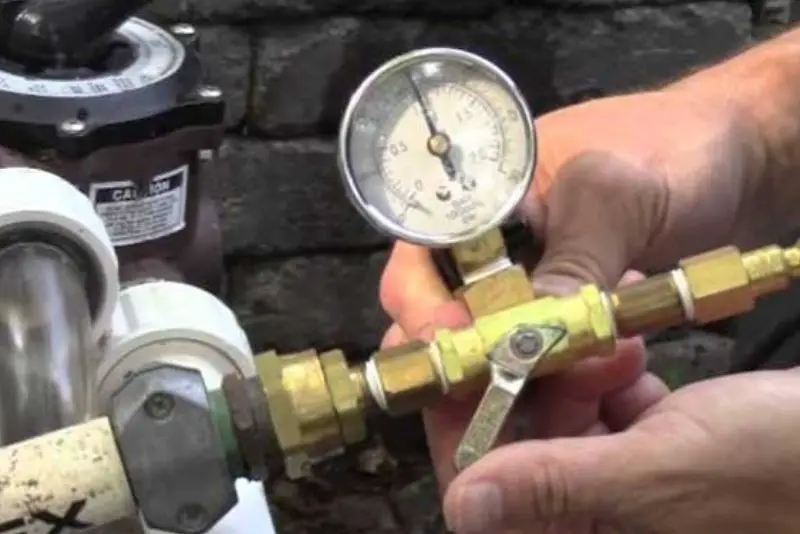
Now, you’d need a water pressure test gauge to check it. Screw it onto a faucet and turn it on while making sure all the other faucets are off. Now, compare the readings and see if your water pressure is lower than required.
You can also ask your neighbors if they’re facing the same issue. If they are, then this may be a temporary problem with the city’s municipal water system.
But if your water source is a well that’s drilled deep into the ground, you may have a bad well pump.
The low-pressure issue can also be caused by having the main valve that’s only half open.
Sometimes, these valves are shut off during routine maintenance and not turned all the way after doing the work. A bad water pressure regulator can also cause this problem.
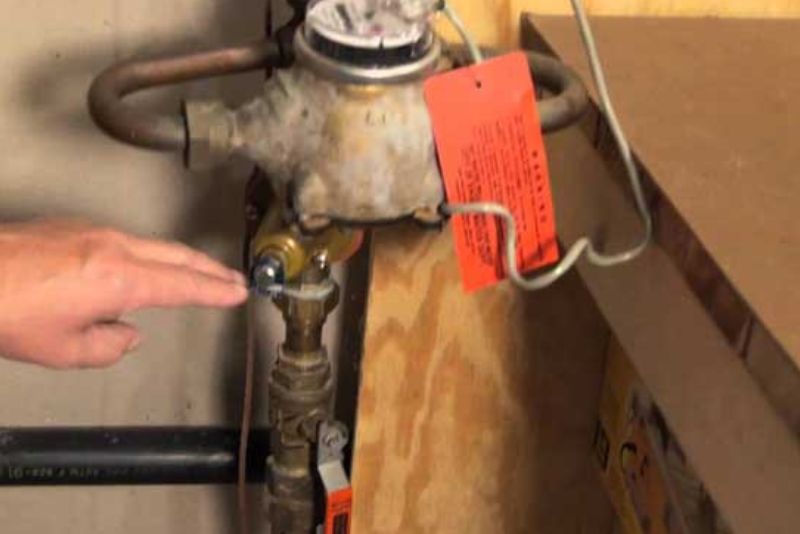
The next thing to check would be if you have any water leaks. If the pipes are damaged or corroded, they can get cracked and the water will fall off as they travel through them.
As you can see, there are a lot of things that can cause low water pressure. Here’s a quick glance at it in case there’s any confusion:
- The main valve is not fully open.
- Faulty water pressure regulator.
- Malfunctioning good pump.
- City’s municipal water system.
- Leak In pipes.
How To Fix:
The method of fixing will depend on the problem itself. If the main valve is not fully open, just open it. You don’t have to do anything if something is wrong with the city’s municipal water system as it’ll get fixed.
But if you have a bad well pump, it’ll have to be replaced. The same goes for a faulty water pressure regulator. If there’s a leak in the pipes, you’d have to upgrade the pipes.
We recommend that you don’t change the pipes yourself and hire an expert as it takes a lot of skills to do it right.
It’ll be more expensive in the short run but it’ll save you from a lot of problems in the future. It’ll not only fix the water pressure but also reduce the risk of corrosion in your drinking water.
If the problem still remains, one last thing you can do is install a water pressure booster to increase the flow rate of water. Keep in mind that it’ll increase your monthly energy bills. So, decide for yourself if it’s worth it.
7. Sediment Build Up
Using hard water leads to the build-up of sediments in your water system and that can lead to Navien temperature fluctuation issues.
Minerals like calcium and magnesium are accumulated when there’s hard water in the system. It corrodes the pipes and may even block the heat exchanger.
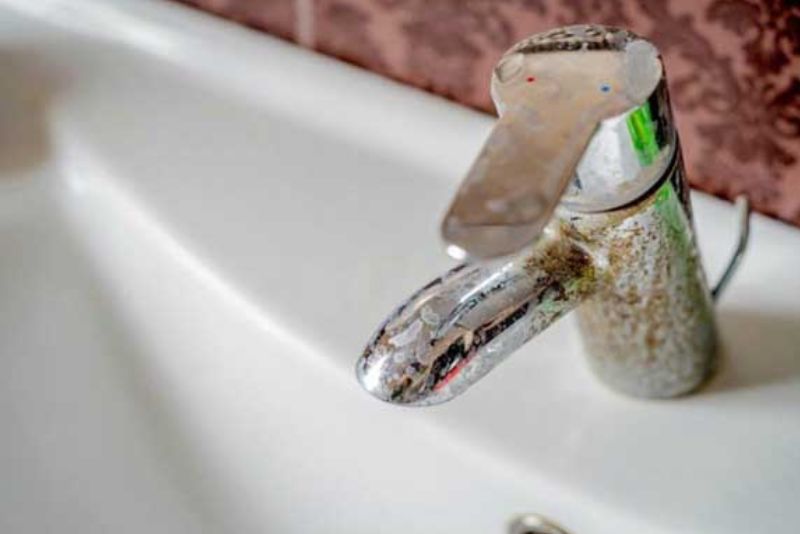
A thick layer of sediment buildup can also block the water flowing through your system and reduce the water pressure.
Unfortunately, it’s a common issue in tankless water heaters. That’s why you should check it at regular intervals for mineral build-up.
How To Fix:
If the mineral build-up has already affected the water lines of your tankless water heater, you should hire a mechanic to clean the lines before using them again.
But with proper maintenance, you can prevent this problem from occurring in the future.
Descaling the water heater once a year should be enough to keep this issue at bay. But if you find that it’s not enough and you need to flush your system several times per year, there’s a serious hard water issue in your area.
You can get flush kits from any hardware store to descale your system. The common tools this kit will have are a descaler, buckets, hoses, and a pump. You can also get them separately if you don’t want to get the kit.

Follow these steps to descale your tankless water heater:
Step 1 – Appling Cleaning Solution
- Shut off the power of the heater and turn off the supply of gas and water to it.
- Open the hot water pressure relief valve to release the pressure that has built up in the system.
- Connect hoses to the service ports and put the pump from the flush kit in the bucket.
- Make sure the end of the hot water hose stays inside the bucket while the hose from the cold water port is connected to the pump.
- Pour the cleaning solution into the bucket.
Step 2 – Flushing The Sediment
- Open both the service ports and turn on the pump.
- Run the pump for an hour so that the cleaning solution is circulated to the water heater.
- The cleaning solution should take out the sediment or minerals that have built up in the system.
Step 3 – Remove Cleaning Residue
- Turn off the pump after it has descaled the heater.
- Get rid of any cleaning fluid that’s still remaining in your water heater.
- Put everything back together and run your heater again.
You can install a water softener to counter this issue in the long run. It’ll not only keep your water system from being corroded but also improve the quality of your life.
The baths will be more refreshing, the drinking water will taste better, and even your laundry will last longer.
8. Clogged Water Filter
If you’re still getting hot water intermittently, you can check the cold water inlet. It’s a tiny plastic device that allows cold water to go to the water heater. The main job of this cold water inlet is to prevent any dirt and debris from entering the tankless heater.
With the passage of time, the dust it collects remains there and begins to clog it up. When that happens, water can no longer go smoothly to the heater.
So, it’ll not only need to you getting bursts of hot and cold water but it’ll also increase the energy bills.
How To Fix:
Your first course of action should be to clean the filter. If that works, you’re done. Otherwise, you’d have to replace it.
If there’s already too much mineral build-up in the heater, you’ll have to descale it as well. It’s a good idea to replace the filter every six months.
9. Corroded Lines
If there are rusty or brown particles in the water, it’s a strong sign that you have corroded lines. When the water flows through your house’s plumbing system, the corrosion can break and enter your water heater.
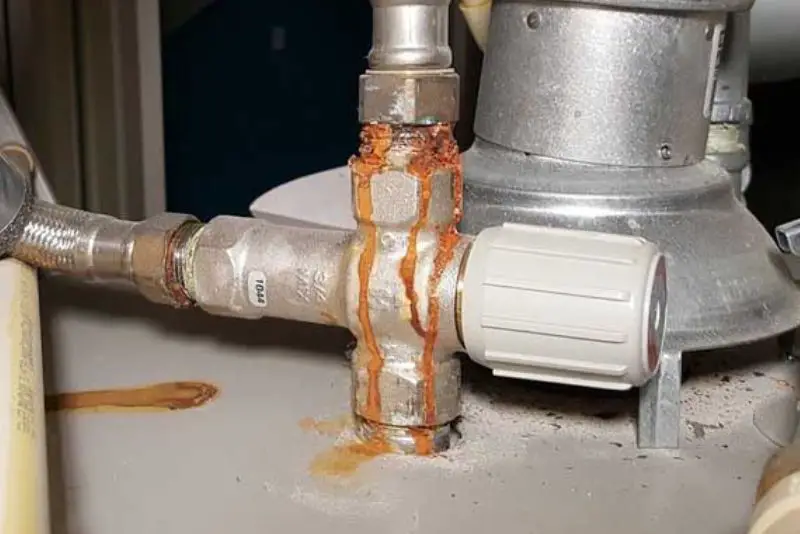
It’s a common reason for getting temperature fluctuations when using a water heater. A poorly installed heat exchanger or condensation going to the gas burner can also lead to corroded lines.
How To Fix:
Corroded lines can lead to several other issues. So, you should replace them as soon as you can by hiring a professional. Check if your heat exchanger is installed correctly and reinstall it if needed. Otherwise, this problem will come back again.
FAQs:
What temperature should a Navien tankless water heater be set at?
Setting a temperature of 120 degrees Fahrenheit or 49 degrees Celcius is ideal for tankless water heaters. You’d be opening yourself up to the possibility of scalding if you turn it up any higher than that.
How to set the temperature on Navien tankless water heater?
First, locate the control unit on your Navien tankless water heater and see the temperature it’s set at. Then, press the “up arrow” button to bring it up and the “down arrow” button to dial it down.
Why do I get cold water in the morning?
The water is cold as it was remaining in the lines from the previous night. If you give it a few seconds, the water heater will be activated and give you hot water.
How long do Navien tankless water heaters last?
It varies from person to person but on average, a Navien tankless water heater lasts for 20 to 25 years. It’s a reliable water heater with high efficiency as well as a long lifespan.
Conclusion
Nothing beats having a relaxing shower after a tiring day of work. That makes it so annoying when you notice Navien tankless water heater temperature fluctuation and your expectations get ruined.
Hopefully, by now you have a clear idea of what’s causing the issue and you know how to fix it. Comment below what was causing the trouble in your case and let us know your experience of solving it. Feel free to ask any questions.
